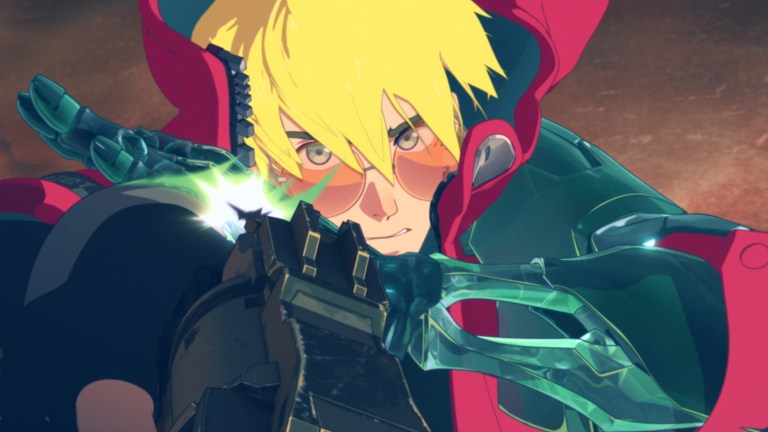Why It Was The Right Time To Revive ’90s Action Anime Trigun
Studio Orange’s Trigun Stampede producers explain the new series’ exciting changes and how it expands the original’s universe.

There is no shortage of foundational anime series that have influenced the medium in crucial ways and Yatsuhiro Nightow’s Trigun stands out as a landmark action series from the 1990s. Trigun resonated strongly with both its native Japanese audience as well as North American crowds thanks to its prominent airplay on Cartoon Network’s Toonami anime block. Trigun is a powerful genre blend of Western and science fiction sensibilities that introduced audiences to Vash the Stampede and his increasingly heightened acts of gunplay. A standalone Trigun movie reignited the fandom’s passion in 2010, but it’s otherwise been nearly 25 years since the anime went off the air.
Studio Orange, the accomplished animation studio that’s responsible for BEASTARS and Land of the Lustrous, have passionately reinvented Trigun for modern audiences with Trigun Stampede. Studio Orange’s signature CG style beautifully translates this franchise’s hyperbolized hijinks and Vash the Stampede has never looked better. Trigun Stampede is a reboot of Madhouse’s anime that’s faithful to its source material where it counts, but the studio has also effectively expanded upon Nightow’s world to give the Humanoid Typhoon an even more exciting canvas to create chaos.
Kiyotaka Waki, the Chief Producer for Trigun Stampede, and Yoshihiro Watanabe (who also translated for Waki), a producer at Studio Orange, graciously opened up on the revival of this iconic anime series, how they figured out the show’s new look and direction, and why it’s more than just a standard reboot.
DEN OF GEEK: What was your relationship with Trigun and did you campaign for this project from Yatsuhiro Nightow or did he come to you? Madhouse animated the original series and so was it a surprise and an honor to get to handle Trigun Stampede instead of them?
KIYOTAKA WAKI: My relationship with the first Trigun anime, which was created by Madhouse, is that I grew up watching it. I was a viewer and had a lot of respect for Trigun right from the start. From there on, I actually joined Madhouse as my first career. I was not involved with the Trigun anime series, nor was I working on the theatrical version [Trigun: Badlands Rumble], but they were working on the theatrical version right next to me when I was at Madhouse. In terms of my relationship with Nightow, it started about five years ago when we began development on Trigun Stampede.
Vash the Stampede has such an iconic look. Why did you feel the need to update his design and where did the inspiration come from?
KW: To be honest, when we first started the project there weren’t any discussions about changing Vash’s look. When we began development, the main discussion was that the Madhouse version was created during a time when Trigun’s manga was still being written. Our starting point is that the manga is already finished. During one of our many development discussions, we talked about how the first-half of the original Trigun manga is a western and the later-half is stronger in the sci-fi elements. When figuring out the anime’s starting point we thought that we should take into consideration how the manga ends and then how to build from that.
Early on in development we had designs for Vash that were closer to the manga’s designs, but we based all of our decisions off of two pillars—one is the visual concept and one is the story concept. The visual concept and preliminary art was done by Koji Tajima. Little by little, Vash’s design started to more closely resemble its finished look.
Trigun Stampede appears to replace one of the original characters, Millie Thompson, with a new figure, Roberto De Niro. Where did that decision come from and why did it seem right to mix up the core cast’s dynamic with an older male instead of an aloof female?
KW: When we were developing the story, we were setting up the entire world for this new version of Trigun, which is something that necessitates characters to fill it. Roberto is one of the character’s who emerged from that necessity. And he’s definitely not a replacement for Millie. To say anything beyond that would be a spoiler. Meryl is definitely an important character. In the series’ early developments we spent a lot of time on how to depict her character and how to give her a bit of a more modern update.
Action anime have come such a long way since Trigun. How do you intend to update the series’ action in a way that still keeps it ahead of the rest of the action genre?
KW: When it comes to action, my definition of “action” extends beyond just fighting. There are many ways to create exciting action and even a character running can be an exciting piece of action. One of the reasons that we went with director Kenji Muto for the show is because he knows how to illustrate action, even if it’s the simplest form of action. That can be done with music, shot composition, or any of the visual elements on display.
On the topic of the show’s music, can you talk about how you figured out the sound for Trigun Stampede and if you wanted to replicate the energy of the original’s soundtrack?
KW: The original manga has a heavy Western element and so we wanted that reflected in the series’ music. However, each character also has distinct musical themes that contribute to the action and sound, too. What’s a little more unique with Trigun Stampede is that typically in Japanese animation it’s the sound director who collaborates with the musical side of things to figure out the soundtrack. However, in the case of Trigun Stampede, the director himself is more involved with the sound directing, which gives him additional control on the music side.
You guys pitched this project to Yatsuhiro Nightow, but how involved has he been with the project? Has he checked in with his thoughts on the direction that Trigun Stampede has taken?
KW: When we were first developing Trigun Stampede we were meeting up with Nightow every month. At that point we were showing him the story and concept art, which is what most of our discussions centered around. When we were having these conversations with Nightow it was very rare that he’d insist that we do something a specific way or to not do something. His objective was that we expand his world as much as possible, which was also our aim with the series.
One of my favorite aspects from the original Trigun is Legato Bluesummers and the Gung-Ho Guns. Can you elaborate on their involvement in the series and if any changes will be made to them, like other characters in Trigun Stampede?
KW: During our discussions on how to illustrate Vash’s opponents, we didn’t want them to simply be people that Vash fights. We wanted the action to always come back to Vash. So that’s how we approached each of these characters and their looks in Trigun Stampede.
Is there anything that you can say about how many episodes or cours are planned at this point? Do you have a set end point or is the future less precise?
KW: We can’t say anymore at this point!
Trigun Stampede premieres January 2023 on Crunchyroll
